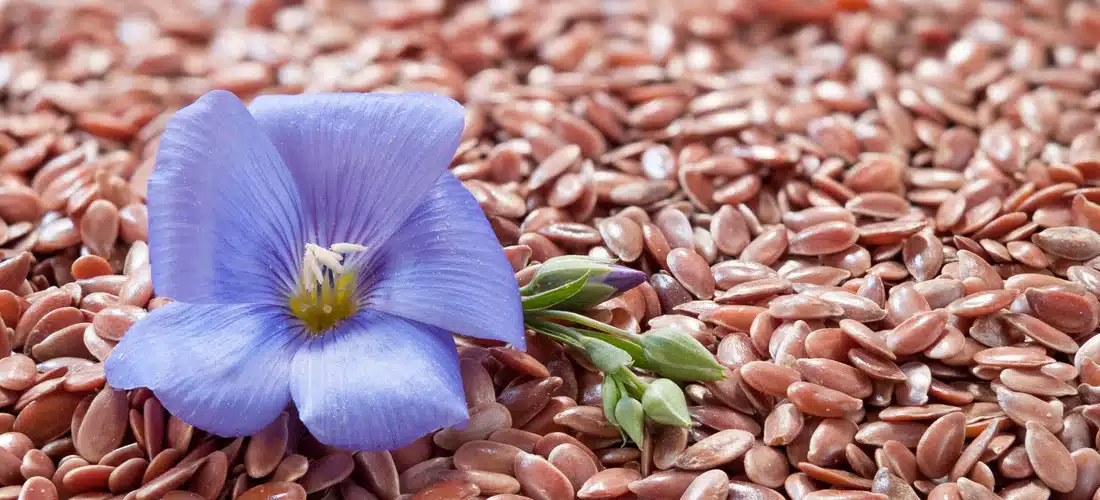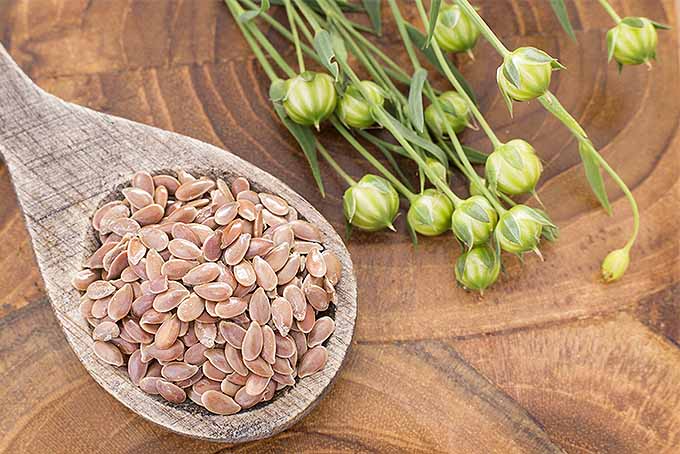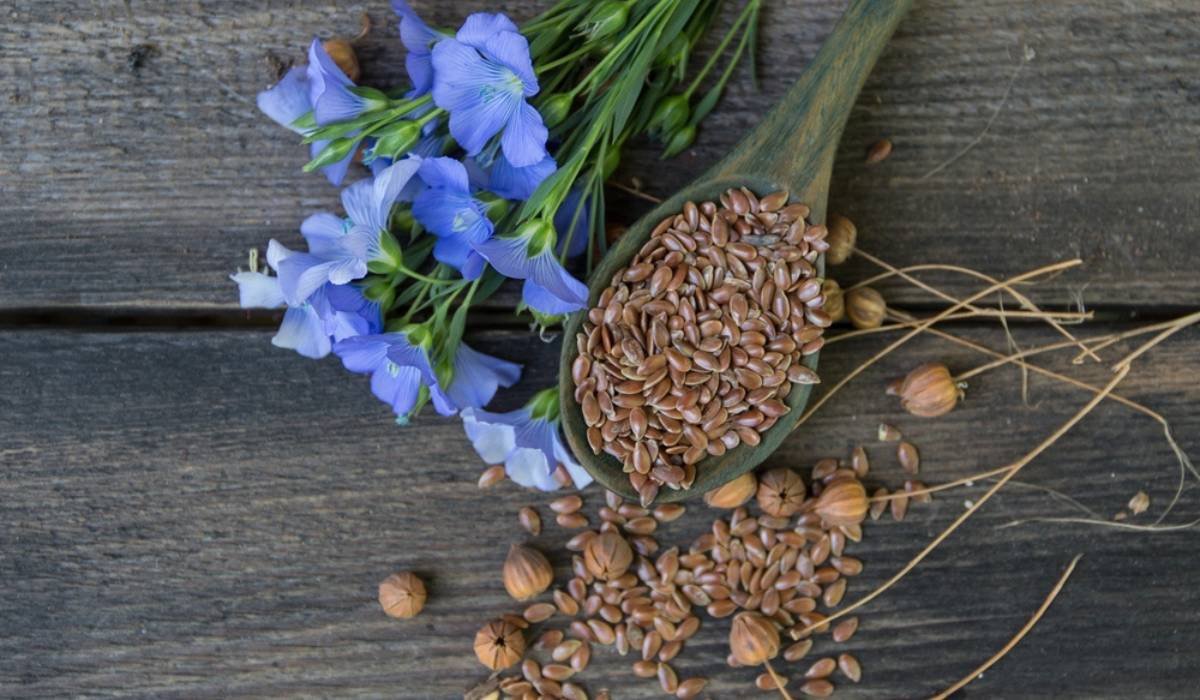Information on growing and cultivating flax seeds?

Flax, scientifically known as Linum usitatissimum, is both a valuable crop for its fibers and a source of nutritious seeds. Growing and cultivating flax for seeds, typically known as flaxseed or linseed, requires specific conditions and care. Ideally, flax thrives in temperate climates and prefers well-drained, rich soil with a neutral pH. Planting should be done in the spring, after the threat of frost has passed, as flax seeds require a cool, moist environment to germinate effectively. Spacing is crucial; seeds should be sown thinly and evenly, about 1 to 1.5 inches apart, to ensure adequate air circulation and reduce the risk of fungal diseases. Flax plants are relatively low-maintenance but they do need regular watering, especially during dry spells, to ensure steady growth.
As flax plants grow, they develop delicate blue flowers, making them not only a crop but also an aesthetically pleasing addition to gardens. The plants are generally ready for harvesting approximately 100 days after sowing, when the seed heads turn golden-yellow and begin to dry. Harvesting involves uprooting the entire plant and then threshing to separate the seeds from the stems. Post-harvest, the seeds need to be dried thoroughly to prevent spoilage. Properly dried seeds can be stored for extended periods in a cool, dry place, preserving their nutritional quality.
One of the challenges in growing flax is pest control, as the plants can be susceptible to fungal diseases and pest infestations. However, with careful monitoring and management, these issues can be minimized. Flax doesn’t require heavy fertilization; a balanced fertilizer applied at the time of planting is generally sufficient. Growing flax can be a rewarding endeavor for those interested in sustainable gardening practices, as it provides both nutritional and environmental benefits. The crop is not only useful for its seeds but also plays a role in crop rotation and soil improvement in agricultural settings.
Cultivating flax for its seeds is a practice that dates back thousands of years, with flax seeds being one of the oldest crops known to be cultivated by humans. The process begins with selecting the right variety of flax. There are two main types: one grown for its fibers, used in linen production, and the other for the seeds, known for their health benefits. For seed production, it’s crucial to choose a variety that is bred specifically for its high-quality seeds.
The soil preparation for flax is an important step in the cultivation process. Flax plants prefer a light to medium loamy soil, rich in organic matter. Before planting, the soil should be well-tilled to ensure it is loose and free of large clumps, allowing the delicate roots of the flax plant to penetrate easily. Flax is known for its ability to grow in poor soil conditions as well, but the quality and quantity of the seeds are significantly improved with better soil.
When it comes to planting, flax seeds should be sown at a depth of about 1 to 2 cm. They require a relatively close spacing to encourage tall, straight growth, which is ideal for seed production. However, overcrowding should be avoided as it can lead to competition for nutrients and increase the likelihood of disease.
Flax is a plant that prefers cool weather and grows best in temperatures between 60°F and 70°F (15°C to 21°C). It requires a moderate amount of water, and consistent moisture is key during the germination and early growth stages. Once established, flax plants can tolerate dry conditions, but prolonged drought can affect seed development.
As the flax plants mature, they will reach a height of about 2 to 3 feet and will produce attractive blue or white flowers. After flowering, the seed pods will start to form. The best time to harvest flax seeds is when the plants have turned yellow and the seeds are firm but not completely dry. If left too long, the pods can shatter, leading to seed loss.
Harvesting involves pulling or cutting the entire plant and then drying it to allow easy separation of the seeds. The drying process is crucial for the storage quality of the seeds. Once dried, the seeds can be separated from the pods either manually or using a mechanical thresher.
In terms of pest and disease management, flax is relatively hardy but can be susceptible to fungal diseases like rust or wilt. Crop rotation and avoiding planting flax in the same soil year after year can help mitigate these issues.
Overall, growing flax for seeds can be a rewarding endeavor. Not only do the seeds provide numerous health benefits, but the plants themselves can improve soil quality and add beauty to the garden with their delicate flowers. With the right conditions and care, flax can be a valuable addition to both home gardens and larger agricultural settings.
The cultivation of flax for seeds requires not only specific planting practices but also an understanding of its growth cycle and harvesting techniques. After planting, flax seeds typically germinate within two weeks, depending on soil temperature and moisture levels. During the growth phase, the plants require minimal intervention. However, weed control is essential, especially in the early stages, as flax plants do not compete well with weeds. Gentle weeding, preferably by hand or using a hoe, can help ensure that the flax plants have enough space and nutrients to grow without competition.
As the flax plants mature, they require less water, making them relatively drought-tolerant. This characteristic is beneficial in regions with less predictable rainfall. However, during the seed formation and maturation stages, adequate moisture is crucial for developing full, healthy seeds. It’s a balance between providing enough water for growth and avoiding excessive moisture that could promote fungal diseases.
The timing of the harvest is a critical aspect of growing flax for seeds. The plants are usually ready for harvest when approximately 90% of the seed pods have turned brown. Harvesting too early can result in immature seeds, while delaying the harvest risks the pods opening and seeds falling to the ground. The traditional method of harvesting flax involves pulling the plants by hand and then drying them. Modern practices may include the use of machinery, especially in large-scale cultivation.
After harvesting, the next step is drying the plants. This process is vital for preserving the seeds and preventing mold or spoilage. The dried plants are then threshed to separate the seeds from the stalks. Threshing can be done mechanically or by hand, depending on the scale of cultivation.
Post-harvest, the seeds need to be cleaned to remove any chaff or debris and then stored in a cool, dry place. Proper storage is crucial for maintaining the seeds’ nutritional value and preventing rancidity. Flax seeds have a high oil content, which makes them prone to oxidation and spoilage if not stored correctly.
For those interested in sustainable and organic farming practices, flax can be an excellent crop choice. It requires relatively low inputs in terms of fertilizers and pesticides, making it suitable for organic cultivation. Additionally, flax plants can improve soil structure and health, making them a beneficial crop in rotation systems.
The cultivation of flax seeds is a rewarding process that requires specific knowledge and care. From the right planting conditions and weed control to careful harvesting and proper storage, each step plays a crucial role in ensuring a successful yield. Whether for small-scale home gardens or larger agricultural ventures, growing flax can be a sustainable and beneficial endeavor, providing valuable seeds known for their health benefits.
The cultivation of flax seeds not only provides nutritional benefits but also contributes to sustainable agricultural practices. Flax is known for its hardiness and adaptability, making it suitable for various climatic conditions. This versatility is beneficial for farmers looking to diversify their crops or for home gardeners seeking a low-maintenance yet productive plant. Flax’s deep root system can help in soil conditioning, improving the soil structure and quality for future crops. This makes it an excellent choice for crop rotation, helping to break disease cycles and reduce soil erosion.
In addition to its agricultural benefits, flax cultivation has an ecological aspect. The flax plant is relatively pest-resistant, reducing the need for chemical pesticides. This trait makes it a favorable choice for organic farming systems. Moreover, flax plants are beneficial for pollinators. Their attractive flowers not only add beauty to the landscape but also provide a valuable food source for bees and other pollinating insects, contributing to biodiversity and ecosystem health.
The end of the flax growing season offers opportunities for utilizing the entire plant. While the seeds are harvested for their nutritional value, the leftover stalks and fibrous material can be used in various ways. These by-products can be composted and returned to the soil as organic matter, used as mulch, or in some cases, processed into linen fiber, highlighting the plant’s multifunctional uses.
For those interested in heirloom varieties and preserving genetic diversity, growing different varieties of flax can be particularly rewarding. Some varieties are optimized for seed production, while others are valued for their fibers. Experimenting with different types can yield a range of seed qualities, oil contents, and even flower colors, contributing to the genetic diversity of the species.
The process of growing flax, from preparing the soil and sowing the seeds to harvesting and processing, can be a learning experience, especially for those new to gardening or farming. It provides an opportunity to understand the growth cycles of plants and the importance of sustainable agricultural practices.
Cultivating flax seeds also involves understanding their role in the larger agricultural ecosystem. Flax plants have a relatively short growing season compared to some other crops, allowing them to fit well into diverse farming systems. They can be planted as a cover crop, serving dual purposes: providing a harvestable product in the form of flax seeds and improving soil health for future crops. As a cover crop, flax helps suppress weeds, reduce soil compaction, and enhance soil fertility through its root system that adds organic matter to the soil.
Another important aspect of flax cultivation is its minimal water requirement compared to other crops. This makes flax an environmentally friendly option, particularly in regions where water scarcity is a concern. Its ability to grow in a range of soil types and its resistance to diseases and pests contribute to its appeal as a sustainable crop choice.
For gardeners and small-scale farmers, flax offers a unique aesthetic appeal. The plant, with its slender stems and beautiful blue flowers, can add visual interest to gardens. Its growth habit, forming dense stands, can create a striking landscape feature. Additionally, flax flowers are an attractive and beneficial addition to pollinator gardens, supporting bees and other beneficial insects.
The harvest of flax seeds is a critical phase, requiring careful timing. Once harvested, the seeds must be properly dried to preserve their nutritional quality and prevent spoilage. This process often involves spreading the seeds out in a thin layer in a warm, dry, well-ventilated area. The dried seeds can then be stored in airtight containers to maintain their freshness.
For those interested in pursuing flax cultivation on a larger scale, there are specific considerations for mechanized planting and harvesting. Mechanization can increase efficiency and reduce labor, but it requires investment in suitable equipment and knowledge of specific techniques for handling flax crops.
Finally, cultivating flax seeds can be an educational experience, particularly for children or those new to gardening. It offers a hands-on way to learn about plant biology, the importance of sustainable agricultural practices, and the process of growing food from seed to harvest.
Growing flax seeds offers a range of benefits, from enhancing soil health and biodiversity to providing a sustainable and visually appealing crop. Whether as part of a home garden or a larger agricultural system, flax cultivation is a rewarding endeavor that contributes to both environmental sustainability and personal satisfaction.
In conclusion, cultivating flax seeds is a practice rich in history and benefits. It goes beyond mere seed production, encompassing environmental sustainability, agricultural diversity, and ecological responsibility. Whether for personal use in a home garden or as part of a larger farming operation, flax cultivation offers a unique blend of nutritional, environmental, and educational benefits, making it a valuable and versatile addition to any cultivation practice.
FAQ:
- Q: What is the best time to plant flax seeds?
- A: Flax seeds should be planted in the spring, after the risk of frost has passed, as they require a cool, moist environment for germination.
- Q: What type of soil is ideal for growing flax?
- A: Flax prefers well-drained, rich soil with a neutral pH. It can tolerate a variety of soil types but thrives in loamy soils.
- Q: How much water do flax plants need?
- A: Flax plants need regular watering, especially during dry periods. However, they are relatively drought-tolerant once established.
- Q: How do you harvest flax seeds?
- A: Flax seeds are ready for harvest when the seed pods turn brown. The plants are typically uprooted or cut, and the seeds are threshed and separated from the stalks.
- Q: Do flax plants require a lot of space to grow?
- A: Flax plants can be grown relatively close together, about 1 to 1.5 inches apart, as they grow upright and don’t spread much.
- Q: Can flax seeds be grown in containers?
- A: Yes, flax can be grown in containers, provided they are deep enough to accommodate the plant’s root system and have good drainage.
- Q: Are there any common pests or diseases that affect flax plants?
- A: Flax is relatively resistant to pests and diseases, but it can be susceptible to fungal diseases like rust or wilt if conditions are too damp.
- Q: How long does it take for flax plants to mature?
- A: Flax plants typically mature and are ready for harvest about 100 days after planting.
- Q: Do flax plants need fertilization?
- A: Flax plants do not require heavy fertilization. A balanced fertilizer applied at planting time is usually sufficient.
- Q: How should flax seeds be stored after harvesting?
- A: After harvesting and drying, flax seeds should be stored in a cool, dry place, preferably in an airtight container to maintain freshness and prevent rancidity.





One thought on “Information on growing and cultivating flax seeds?”